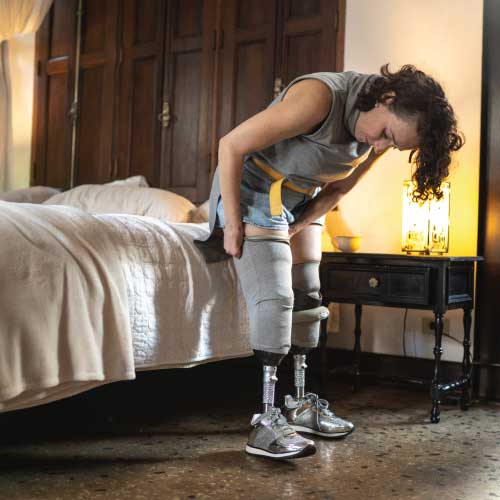A Double Amputee’s Olympics Chances Look Bleak
Blake Leeper, one of the world's fastest bilateral amputee runners, needs to run on a shorter set of running-specific prosthetic legs if he wants to bid for a spot on the US Olympic team.

On April 26, a special expert panel for World Athletics, the global governing body of track field, ruled that Leeper's running blades give him unfair leverage over non-disabled runners. The committee maintains that the artificial legs make him taller than he would have been with biological legs.
Born with both legs missing below the knees, Leeper underwent surgery at age four to wear prosthetic legs. In 2012, Leeper caught the public's attention when he won two medals at the London Paralympics. After this stint, he decided to compete against non-disabled runners.
He used the same blades in various competitions for five years before they were banned in 2018. Had World Athletics not changed their standards, Leeper's height would not have been an issue. With the new requirements, he would not even qualify to compete at the Paralympics.
In 2019, Leeper qualified to compete for the world championships, but World Athletics officials said that his blades made him "unnaturally tall." He faced the same issue in 2020 when the Court of Arbitration for Sport (CAS) in Switzerland upheld World Athletics' decision.
In hopes of securing a spot in the US Olympics team, Leeper switched to a set of blades that made him about two inches shorter, which required him to relearn how to run. But sporting officials were unmoved. In April, the panel said that although the new pair of blades were two inches shorter than the previous ones, they believe that the artificial limbs still gave Leeper an unfair advantage.
In a statement, World Athletics said that "there is a direct relationship between leg length and running speed…therefore the height of Mr. Leeper's running-specific prostheses result in him running faster in the 400-meter event than would otherwise be the case."
Accounting for genetic differences
Leeper and his team argue that the recent ruling was informed by studies that involved only Asian and Caucasian athletes. In their appeal, Leeper's lawyers quoted research that suggests people of African lineage can have longer legs than people of different genealogies.
The World Athletics panel denied allegations of discrimination. They also challenged the data indicated in the appeal.
Not an exact science
Leeper's running prosthetic legs, as well as the device that attaches them to his residual limbs, were created precisely at a height that allows him to move efficiently. This is a standard procedure for all high-performance prosthetic limbs.
However, according to experts, one cannot ascertain Leeper's natural stature based on the prosthetic leg height that he finds comfortable when moving.
Throughout the past decade, officials haven't found a reliable method for determining the appropriate height for double amputees with running blades. They used to base an athlete's probable height on the distance of one's fingertips from the middle of the torso. Recently, height estimates were founded on an athlete's sitting height—how tall they are when seated on a box.
However, some experts point out that these methods don't account for the possible differences. In addition, some para-athletes may have natural conditions that affect bone size. On this probability alone, extrapolating height based on bone length won't be accurate.
Everyone has an advantage
According to supporters of Leeper and other bilateral amputee athletes, the advantage provided by the running blades is nullified from the start. They point out that it takes longer for amputee runners to reach maximum speed, and navigating turns on prosthetic legs is more challenging, thus requiring more effort.
World Athletics officials debunk the claims by noting that Leeper often runs the second half of the race faster than the first, unlike other elite runners. "Once the acceleration phase is complete, and the athlete [can] run freely, the speed achieved is substantial," the panel said in their statement.
With the 2021 Olympics slated for July, Leeper and his team are preparing to appeal World Athletics' ruling to the Swiss Supreme Court.
Related reading:
Paralympian Loses Appeal to Use Prosthetic Legs at the Tokyo Olympics










































































